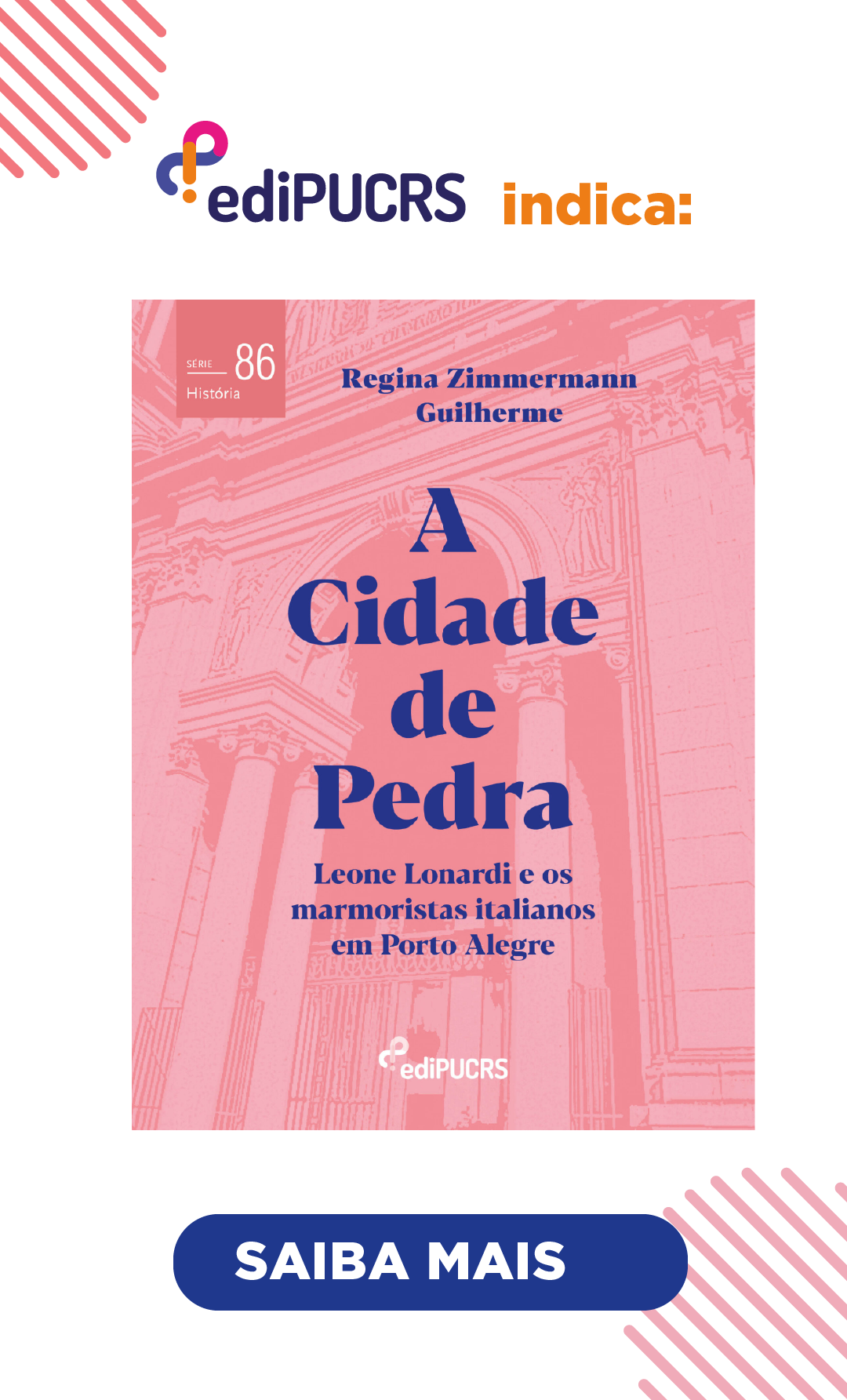UERJ 70
commemorations and stories of a public university
DOI:
https://doi.org/10.15448/1980-864X.2021.2.38999Keywords:
Commemorations, UERJ, Public history, Institutional historyAbstract
The article analyzes two projects proposed and implemented in 2019, on the occasion of the beginning of the commemoration of the seventy years of University of the State of Rio de Janeiro (UERJ): the preparation of the book 70 years UERJ: 1950 - 2020 and the thematic exhibition ESQUELE7O - 70 years of UERJ. The connections of these experiences with Public History were based on their relationship with historiography and memory and thought on three fronts: the collaborative character of the book and the exhibition, which involved teachers, scholarship students, technicians and, in the case of the exhibition, artists, in a shared authorship; the search to build an institutional history that was not laudatory, escaping from narrating a trajectory guided by the succession of administrators and their achievements, a criterion that guided both the writing of texts and the choice of photographs; and the assumption of the “Favela do Esqueleto” (Skeleton Slum) as a symbolic landmark of the university's commitment to fighting social injustices, making it possible to rethink the relationship between the public university and the publics who enjoy the services emanating from this institution, as well as the urban landscape in Rio.
Downloads
References
ANDRADE, Carlos Drummond de. O avesso das coisas. Aforismos. 2. ed. Rio de Janeiro: Record, 1990.
ASSMANN, Aleida. Espaços da recordação. Formas e transformações da memória cultural. Tradução de Paulo Soethe. Campinas: Editora da UNICAMP, 2011.
BRUM, Mario; GONÇALVES, Rafael Soares. O Rio do IV Centenário aos 450 anos: novas funções da cidade e o passado como obstáculo. Cadernos do Desenvolvimento Fluminense, Rio de Janeiro, n. 7, p. 37-56, jan./jun. 2015.
CAMPOS, Pedro Henrique Pedreira Campos. Estranhas catedrais: as empreiteiras brasileiras e a ditadura civil-militar, 1964-1988. Niterói: Eduff, 2015.
CANDAU, Joël. Antropologia da Memória. Lisboa: Instituto Piaget, 2013.
CATROGA, Fernando. O céu da memória. Cemitério romântico e culto cívico dos mortos em Portugal. Coimbra: Minerva, 1999.
CATROGA, Fernando. Memória, História e Historiografia. Coimbra: Quarteto, 2001.
CUNHA, Analu; CAMPOS, Marcelo; CASTRO, Maurício Barros de. Quanto ao futuro. In: ESQUELE7O – 70 anos de UERJ (folder da exposição). Rio de Janeiro: UERJ/Centro Cultural do Patrimônio Paço Imperial, 2019.
GAGNEBIN, Jeanne Marie. Lembrar escrever esquecer. São Paulo: Editora 34, 2006.
GONÇALVES, Rafael Soares; AMOROSO, Mauro. Golpe militar e remoções das favelas cariocas. ACERVO, Rio de Janeiro, v. 27, n. 1, p. 209-226, jan./jun. 2014.
FRISCH, Michael. A história pública não é uma via de mão única, ou, De A Shared Authority à cozinha digital, e vice-versa. In: MAUAD, Ana Maria; ALMEIDA, Juniele Rabêlo de; SANTHIAGO, Ricardo (org.). História pública no Brasil: sentidos e itinerários. São Paulo: Letra e Voz, 2016. p. 57-69.
HAYDEN, Dolores. The power of place: urban landscapes as Public History. Cambridge, Massachusetts: The MIT Press, 1997.
HUTTON, Patrick H. History as an art of memory. Hanover: University Press of New England, 1993.
MANCEBO, Daise. Da gênese aos compromissos. Rio de Janeiro: EdUERJ, 1996.
MAUAD, Ana Maria. Foto-ícones, a história por detrás das imagens? Considerações sobre a narratividade das imagens técnicas. In: RAMOS, Alcides Freire.; PATRIOTA, Rosangela; PESAVENTO, Sandra Jatahy (org.) Imagens na História. São Paulo: Editora Hucitec, 2008. p. 197-212.
MAUAD, Ana Maria. Fotografia pública e cultura do visual, em perspectiva histórica. Revista Brasileira de História da Mídia, Teresina, v. 2, n. 2, p. 11-16, jul./dez. 2013.
MAUAD, Ana Maria, SANTHIAGO, Ricardo e BORGES, Viviane Trindade (org). Que história pública queremos? São Paulo: Letra e Voz, 2018.
MOTTA, Marly Silva da. Saudades da Guanabara: o campo político da cidade do Rio de Janeiro (1960-1975). Rio de Janeiro: Editora FGV, 2000.
NORA, Pierre (dir.). Les lieux de mémoire. La République. Paris: Gallimard, 1984. v. 1.
REAP, James K. Conservação do patrimônio cultural: um panorama internacional. In: ALMEIDA, Juniele Rabêlo de; ROVAI, Marta Gouveia de Oliveira (org.). Introdução à História Pública. São Paulo: Letra e Voz, 2011. p. 65-78.
REZNIK, Luís; PINTO, Carlos Eduardo Pinto de; SILVA, Camila Borges da; GONÇALVES, Marcia de Almeida; FERNANDES, Rui Aniceto Nascimento. 70 Anos UERJ: 1950-2020. Rio de Janeiro: EdUERJ, 2019.
RICOEUR, Paul. A memória, a história, o esquecimento. Tradução de Alain François et al. Campinas, Editora da UNICAMP, 2007.
SACKS, Oliver. O rio da consciência. Tradução Laura Teixeira Motta. São Paulo: Cia das Letras, 2017.
SCHMIDT, Benito Bisso. O historiador-curador: a experiência de realizar uma exposição histórica voltada a públicos diversos. In: MAUAD, Ana Maria; ALMEIDA, Juniele Rabêlo de; SANTHIAGO, Ricardo (org.). História pública no Brasil: sentidos e itinerários. São Paulo: Letra e Voz, 2016. p. 275-285.
SELIGMANN-SILVA, Marcio. Reflexões sobre a memória, a história e o esquecimento. In: História, memória, literatura: o testemunho na Era das Catástrofes. Campinas: Editora da UNICAMP, 2003. p. 59-88.
TESSITORE, Viviane. Arquivos e centros de documentação: um perfil. In: ALMEIDA, Juniele Rabêlo de; ROVAI, Marta Gouveia de Oliveira (org.). Introdução à História Pública. São Paulo: Letra e Voz, 2011. p. 161-175.
WEINRICH, Harald. Lete - Arte e Crítica do Esquecimento. Rio de Janeiro: Civilização Brasileira, 2001.
YERUSHALMI, Yosej Hayim et al. Usos do esquecimento. Tradução de Eduardo Alves Rodrigues e Renata Chrystina Bianchi de Barros. Campinas: Editora da UNICAMP, 2017.
Downloads
Published
How to Cite
Issue
Section
License
Copyright (c) 2021 Carlos Eduardo Pinto de Pinto, Márcia de Almeida Gonçalves, Rui Aniceto Nascimento Fernandes

This work is licensed under a Creative Commons Attribution 4.0 International License.
Copyright
The submission of originals to Estudos Ibero-Americanos implies the transfer by the authors of the right for publication. Authors retain copyright and grant the journal right of first publication. If the authors wish to include the same data into another publication, they must cite Estudos Ibero-Americanos as the site of original publication.
Creative Commons License
Except where otherwise specified, material published in this journal is licensed under a Creative Commons Attribution 4.0 International license, which allows unrestricted use, distribution and reproduction in any medium, provided the original publication is correctly cited.





